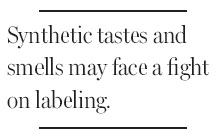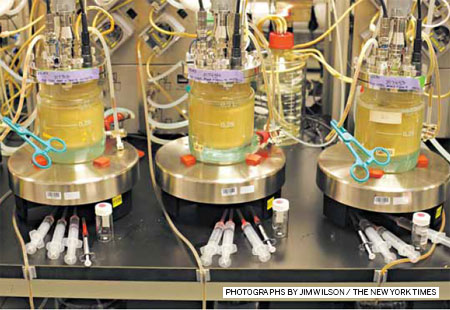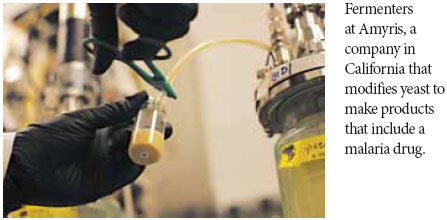Exotic scents, via yeast
Updated: 2013-11-10 07:59
By Andrew Pollack(The New York Times)
|
|||||||||
EMERYVILLE, California - Vanilla, saffron, patchouli. For centuries, spices and flavorings like these have come from exotic plants growing in remote places like the jungles of Mexico or the hillsides of Madagascar. Some were highly prized along ancient trading routes like the Silk Road.
Now a powerful form of genetic engineering could revolutionize the production of some of the most sought-after flavors and fragrances. Rather than being extracted from plants, they are being made by genetically modified yeast or other micro-organisms cultured in huge industrial vats.
"It's just like brewing beer, but rather than spit out alcohol, the yeast spits out these products," said Jay D. Keasling, a co-founder of Amyris, a company based here that is a pioneer in the field. However, while yeast makes alcohol naturally, it would not produce the spices without extensive genetic manipulation.
The advent of "synthetic biology" raises complex economic and regulatory issues, such as whether such yeast-made ingredients can be called natural and whether developing countries dependent on these crops will be hurt.
Supporters say the technique could benefit food and cosmetic companies, and consumers, by reducing wild swings in price, availability and quality that come from dependence on agriculture. It may even relieve pressure on some overharvested wild plants like sandalwood, a tree that provides a fragrance.
The products, which taste or smell nearly the same as the real thing, are coming quickly and even moving beyond flavors and fragrances to include other commodities, like rubber and drugs.
In April, the pharmaceutical company Sanofi began commercial production of a malaria drug using baker's yeast modified by Amyris. The drug's ingredient is usually extracted from a shrub that grows in China, Vietnam and various African countries.
Evolva, a Swiss company, is about to start marketing yeast-made vanillin, the main component of vanilla. It is also working on saffron, now obtained mainly from crocuses grown in Iran. The companies Isobionics and Allylix are producing valencene, a flavoring usually extracted from oranges, and nootkatone, a grapefruit flavor that also has potential as an insect repellent.
"It's really environmentally friendly. The whole process is sustainable," said Toine Janssen, chief executive of Isobionics, based in the Netherlands.
But critics say the technology threatens the livelihoods and exports of developing countries. "They are going after pockets of tropical farmers around the world," said Jim Thomas, a researcher at the ETC Group, a Canadian technology watchdog.
Rick Brownell, an executive at the Virginia Dare Extract Company, a leading supplier of natural vanilla based in Brooklyn, said 80,000 farmers in Madagascar, one of the world's poorest countries, grow vanilla beans.

"I really count on that to make a living," said Bersonina, 63, a farmer in Madagascar. Bersonina, who uses only one name, said that the $200 he made last year producing about 50 kilograms of vanilla barely supported his family of four.
Chemically synthesized substitutes for vanillin and other extracts already exist, and fermentation has long been used to make some vitamins and citric acid. But proponents of synthetic biology say that the more extensively modified yeast can make things that cannot be synthesized chemically and cold not previously be made by fermentation. They also say the resulting products might be more natural than chemical substitutes.
"The need for natural is the key driver," said Ahmet Baydar, director of research and development at International Flavors and Fragrances, the company that will market Evolva's vanillin.
Evolva's vanillin cannot be called natural vanilla, because the vanilla bean product contains components besides vanillin. But it conceivably could be called a natural ingredient since it is made in a living organism, said John B. Hallagan, general counsel of the Flavor and Extract Manufacturers Association.
International Flavors and Fragrances is hoping that the vanillin will attract food companies that want to label their products all-natural but do not want to pay the higher price for natural vanilla.
But the environmental group Friends of the Earth has started a campaign to pressure ice cream makers into rejecting the vanillin. "There's nothing 'natural' about genetically engineered yeast that excretes vanilla flavoring," it said in an August email to members.
The companies say their products can be cheaper than those from plants, though some experts say that has yet to be proved.
"You would have to have a very high yield to compete with plants that are so good at doing this," said Peter Facchini, a plant biologist at the University of Calgary.
The New York Times


(China Daily 11/10/2013 page11)